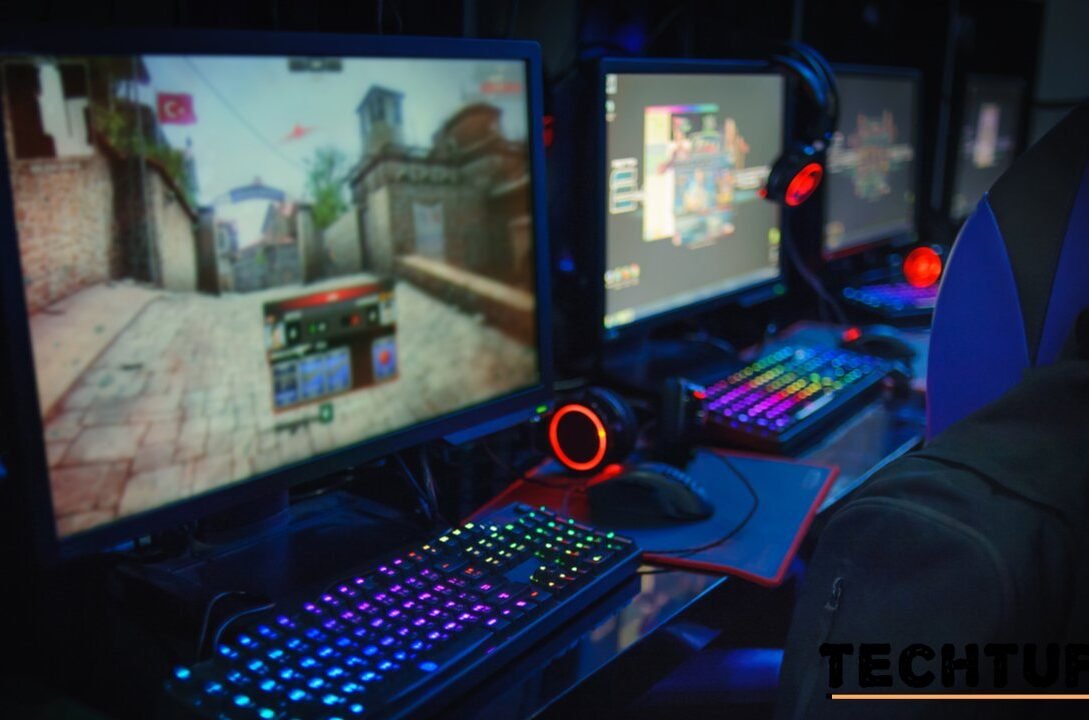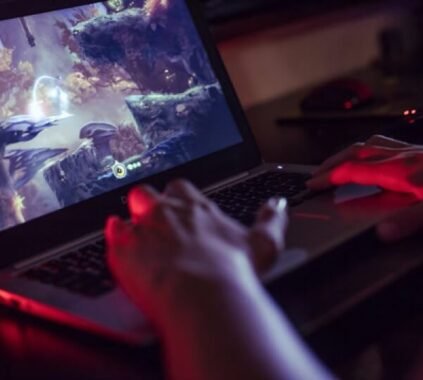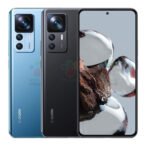Complete your rig with one of the best gaming monitor
Gaming screen choices continue to develop with new brands, highlights, and consistently developing capacities. It’s an exciting chance to be a PC gamer, yet that implies that choosing the best gaming monitor for your apparatus is growing more muddled consistently. The determination can overpower, from screen-smoothing innovations (Nvidia G-Sync and AMD FreeSync) to super quick revive rates that can arrive at a marvellous 360 Hz.

For pixel junks, wide 4K screens are similarly as unforgiving with your wallet as on the most recent designs cards. Fortunately, we have a lot of great picks for you to overhaul your worn-out screen.
Choosing the Best Gaming Monitor for You
when you choosing the best gaming monitor, it involves considering several factors to ensure you get the best performance and visual experience. Here are the key elements to keep in mind:
Panel Types
- IPS (In-Plane Switching):
- Pros: Better color accuracy wider viewing angles.
- Cons: Slower response times compared to TN panels can be more expensive.
- TN (Twisted Nematic):
- Pros: Fast response times, typically less expensive.
- Cons: Poor color reproduction and narrow viewing angles.
- VA (Vertical Alignment):
- Pros: Better contrast ratios, decent color accuracy, good for dark scenes.
- Cons: Slower response times than TN panels, can have ghosting issues.
- OLED (Organic Light Emitting Diode):
- Pros: Superior color accuracy and contrast, faster response times, very thin designs.
- Cons: It can be expensive, and there is a risk of burn-in.
Screen Size and Aspect Ratio
- Screen Size: Common sizes range from 24 to 32 inches. Larger screens provide a more immersive experience but require more desk space.
- Aspect Ratio: 16:9 is standard, but ultrawide monitors (21:9 or 32:9) can offer a more immersive experience, especially for racing and simulation games.
Refresh Rate and Response Time
- Refresh Rate: Higher refresh rates (120Hz, 144Hz, 240Hz) provide smoother motion and are crucial for competitive gaming.
- Response Time: Lower response times (1 ms to 5 ms) reduce motion blur and ghosting.
Resolution
- 1080p (Full HD): Good for budget setups and smaller screens.
- 1440p (Quad HD): Provides a balance between performance and visual quality.
- 4K (Ultra HD): Offers the best visuals but requires a powerful GPU.
Additional Features
- G-Sync/FreeSync: These technologies reduce screen tearing and stuttering by synchronizing the monitor’s refresh rate with your GPU.
- HDR (High Dynamic Range): Improves color and contrast for more realistic images.
- Port Options: Ensure the monitor has enough ports (HDMI, DisplayPort, USB) for your setup.
- Built-in Speakers: Useful but typically less as good as dedicated speakers.
- RGB Lighting: Adds aesthetic appeal, though it’s more of a personal preference.
Quick Shopping Tips
When attempting to buy the great gaming reveal on your PC, take into account the following:
G-Sync vs. FreeSync:
- Compatibility: G-Sync works best with Nvidia graphics cards, while FreeSync works with AMD systems.
- Performance: Running G-Sync on a FreeSync-only monitor can result in inconsistent performance.
- Cost: FreeSync monitors are generally less expensive, with comparable performance to G-Sync.
- Further Comparison: Refer to the Nvidia G-Sync vs. AMD FreeSync evaluation for a detailed comparison.
Panel Types:
- TN (Twisted Nematic): Fastest response times, most affordable, but weaker viewing angles and color quality.
- IPS (In-Plane Switching): Better color accuracy than TN, slightly slower response times than VA.
- VA (Vertical Alignment): Best contrast, better viewing angles and color than TN, slower response times.
Refresh Rates:
- Importance: Higher refresh rates (measured in Hz) result in smoother images.
- Gaming Standard: A minimum of 75 Hz is recommended, with most gaming monitors offering at least 144 Hz.
- Correlation with Response Time: Aim for the highest refresh rate combined with the lowest response time.
Resolution:
- Options: Common resolutions are Full HD (1920 x 1080), QHD (2560 x 1440), and 4K (3840 x 2160).
- Image Quality: Higher resolution provides sharper images with more detail.
- Performance Trade-off: Higher resolutions (like 4K) typically have lower refresh rates due to the increased number of pixels, with 4K monitors usually maxing out at 144 Hz. Lower resolutions can achieve higher refresh rates, up to 360 Hz.
The Best Gaming Monitors You Can Buy Today
Dell S3222DGM
Best Gaming Monitor

SPECIFICATIONS
Screen Size: 32 inches
Aspect Ratio:16:9
Resolution: 2560 x 1440 @ 165 Hz
Panel Type: VA
Refresh Rate: 165 Hz
Response Time (GTG): 4ms
Adaptive-Sync: FreeSync Premium Pro
REASONS TO BUY
| 1. Sharp image with vivid and accurate color | 2. Premium level contrast |
| 3. Solid video processing | 4. Excellent build quality |
REASONS TO AVOID
No HDR Support:
The Dell S3222DGM lacks HDR support, which can be a significant drawback for users who want enhanced color and brightness for a more immersive viewing experience.
Limited Color Coverage:
Although it covers 85% of the DCI-P3 color gamut, more is needed for professional color grading or users who require highly accurate color representation.
VA Panel Limitations:
VA panels, including the S3222DGM, can suffer from slower response times and more noticeable motion blur than IPS panels, which might affect fast-paced gaming experiences.
Curved Screen Might Not Suit Everyone:
The 1800R curvature of the screen may only be comfortable for some users, especially those who prefer flat screens for tasks other than gaming.
Monoprice Dark Matter 42770
Best Budget Gaming Monitor
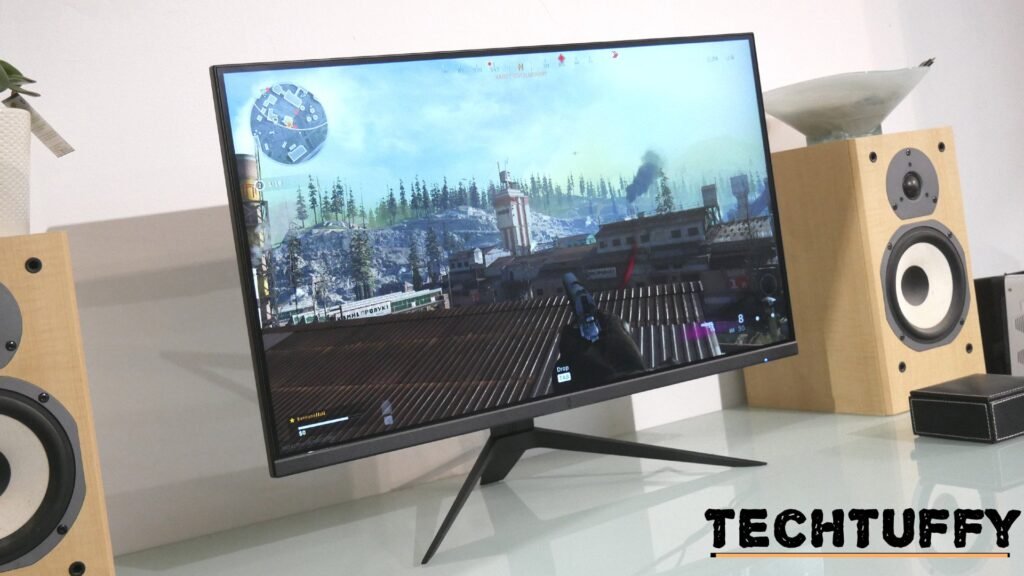
SPECIFICATIONS
Screen Size: 25 inches
Aspect Ratio: 16:9
Resolution: 1920 x 1080
Panel Type: IPS / W-LED, edge array
Refresh Rate: 144 Hz
Response Time (GTG): 1ms
Adaptive-Sync: FreeSync & G-Sync Compatible
REASONS TO BUY
| 1. Good contrast | 2. Superb overdrive |
REASONS TO AVOID
You might be referring to the Monoprice Dark Matter 42770 gaming monitor. Here are a few reasons you might want to consider other options:
- No HDR Support: This monitor does not support HDR, so you won’t get the enhanced color and contrast HDR provides.
- Lack of USB Ports and Internal Speakers: The monitor needs USB ports and internal speakers, which can be inconvenient if you prefer an all-in-one solution.
- Brightness: While the brightness is adequate for most indoor environments, more might be needed for very bright rooms.
Gigabyte G27F2
Best Full HD Gaming Monitor

SPECIFICATIONS
Screen Size: 27 inches
Aspect Ratio:16:9
Resolution: Full HD
Panel Type: IPS
Refresh Rate: 170 Hz
Response Time (GTG): 1ms
Adaptive-Sync: FreeSync & G-Sync Compatible
REASONS TO BUY
| 1. Excellent color accuracy and contrast | 2. Quick response and low input lag |
| 3. Super-smooth overdrive and video processing | 4. Solid build quality |
REASONS TO AVOID
- Disappointing Contrast Ratio: The monitor’s contrast ratio is not as high as some other models, which can result in less vibrant images, especially in darker scenes.
- Basic Design: The design is quite basic and lacks some ergonomic adjustments, such as swivel and pivot, which might be important for your setup.
- No Built-in Speakers: This monitor lacks built-in speakers, so you’ll need external speakers or headphones for audio.
Dell G3223Q
Best 4K Gaming Monitor

SPECIFICATIONS
Screen Size: 32 inches
Aspect Ratio:16:9
Resolution: 4K
Panel Type: IPS
Refresh Rate: 144 Hz
Response Time (GTG): 1ms
Adaptive-Sync: FreeSync & G-Sync Compatible
REASONS TO BUY
| 1. Pro-level color accuracy out of the box | 2. Colorful and bright image |
| 3. Low input lag | 4. Solid build quality |
REASONS TO AVOID
- Low Contrast Ratio: The monitor has a low contrast ratio, which can make blacks appear gray, especially in dark scenes
- Poor HDR Performance: The HDR implementation is not very effective, leading to underwhelming HDR experiences
- No Built-in Speakers: This monitor does not come with built-in speakers, so you’ll need external speakers or headphones for audio
- Motion Blur: While it has good motion handling, there is still some noticeable motion blur, which might be a concern for competitive gamers
MSI Optix MAG274QRF-QD
Best Gaming Monitor for Color
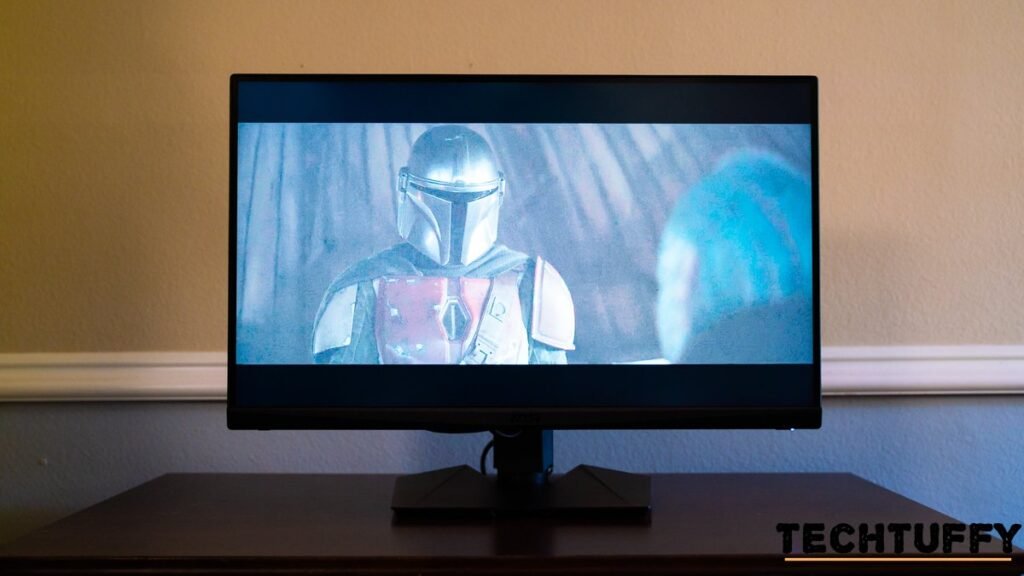
SPECIFICATIONS
Screen Size: 27 inches
Aspect Ratio:16:9
Resolution: 2560 x 1440
Panel Type: IPS
Refresh Rate: 165 Hz
Response Time (GTG): 1ms
Adaptive-Sync: G-Sync Compatible
REASONS TO BUY
| 1. Huge color gamut | 2. Fast response |
REASONS TO AVOID
- Overly Saturated Colors: The quantum dot layer can cause colors to appear oversaturated, which might not be ideal for tasks requiring color accuracy
- Poor HDR Support: The HDR implementation is not very effective, making HDR content look similar to SDR
- No sRGB Mode: This monitor lacks an sRGB mode, which can be a drawback if you need accurate colors for standard content
- Low Contrast Ratio: The contrast ratio is relatively low, which can make blacks appear gray, especially in dark scenes
- Backlight Strobe Artifacts: Using the backlight strobe feature can create visual artifacts, which might be distracting during gameplay
Viotek GNV34DBE
Best Curved Gaming Monitor

SPECIFICATIONS
Screen Size: 34 inches
Aspect Ratio: 21:9
Resolution: 3440 x 1440
Panel Type: VA
Refresh Rate: 144 Hz
Response Time (GTG): 4ms
Adaptive-Sync: FreeSync
REASONS TO BUY
| 1. Contrast | 2. Effective overdrive |
REASONS TO AVOID
- Wobbly Stand: The stand is not very sturdy and lacks height adjustment, which can be inconvenient if you need to adjust the monitor’s position frequently
- Needs Calibration: Out of the box, the monitor requires calibration to achieve the best color accuracy and performance
- Limited Features: It lacks some features that are common in higher-end monitors, such as USB ports and an sRGB mode
- Brightness: The brightness levels are on the lower side, which might not be ideal for well-lit environments
- No Built-in Speakers: The monitor does not come with built-in speakers, so you’ll need external audio solutions
Aorus CV27Q
Best 1440p Gaming Monitor

SPECIFICATIONS
Screen Size: 27 inches
Aspect Ratio:16:9
Resolution: 2560 x 1440
Panel Type: VA
Refresh Rate: 165 Hz
Response Time (GTG): 1ms
Adaptive-Sync: FreeSync Premium Pro
REASONS TO BUY
| High Refresh Rate | Excellent Color Accuracy |
| Curved Design | Built-in RGB Lighting |
REASONS TO AVOID
- High Power Consumption: This monitor consumes more power compared to some of its competitors, which might be a concern if you’re looking to minimize energy use
- Inaccurate sRGB Mode: The sRGB mode on this monitor is not very accurate, which can be an issue if you need precise color representation for tasks like photo editing
- No Built-in Speakers: Similar to many gaming monitors, the Aorus CV27Q lacks built-in speakers, so you’ll need external audio solutions
- Limited HDR Controls: There are no image controls available for HDR, which can limit your ability to fine-tune the display to your liking
- Viewing Angles: As a VA panel, it has narrower viewing angles compared to IPS panels, which might affect the image quality when viewed from the sides
Asus ROG Strix XG279Q
Best 1440p Gaming Monitor Splurge

SPECIFICATIONS
Screen Size: 27 inches
Aspect Ratio: 16:9
Resolution: 2560 x 1440
Panel Type: IPS
Refresh Rate: 144Hz (170 Hz with overclock)
Response Time (GTG): 1ms
Adaptive-Sync: G-Sync Compatible
REASONS TO BUY
| 1. High Refresh Rate | 2. Excellent Color Accuracy |
| 3. Adaptive Sync Technology | 4. Ergonomic Design |
REASONS TO AVOID
- Poor Black Uniformity: The monitor has issues with black uniformity, which can be noticeable in dark scenes
- High Input Lag at 60Hz: While it performs well at higher refresh rates, the input lag increases significantly at 60Hz, which might affect your experience if you play games at this refresh rate
- Low Contrast Ratio: As an IPS panel, it has a lower contrast ratio compared to VA panels, which can result in less vibrant colors and deeper blacks
- Needs Calibration: Out of the box, the monitor requires calibration to achieve the best possible image quality, particularly for grayscale and gamma settings
Razer Raptor 27
Best 144Hz Gaming Monitor

SPECIFICATIONS
Screen Size: 27 inches
Aspect Ratio:16:9
Resolution: 2560 x 1440 @ 144Hz
Panel Type: IPS
Refresh Rate: 144 Hz
Response Time (GTG): 4ms
Adaptive-Sync: G-Sync Compatible, FreeSync
REASONS TO BUY
| 1. Sleek and stylish design | 2. Smooth and fluid visuals |
| 3. Great color accuracy and HDR support | 4. A tear-free and stutter-free gaming experience |
REASONS TO AVOID
- High Price: The Razer Raptor 27 is relatively expensive compared to other monitors with similar specifications, which might not be ideal if you’re on a budget.
- Limited Connectivity Options: It has fewer connectivity ports than competitors, which can be a limitation if you need to connect multiple devices.
- No Built-in Speakers: The monitor lacks built-in speakers, so you’ll need external audio solutions.
- Heavy and Bulky: The monitor is quite heavy and bulky, which might make it difficult to move or adjust.
Asus ROG Swift PG279QM
Best 240 Hz Gaming Monitor

SPECIFICATIONS
Screen Size: 27 inches
Aspect Ratio:16:9
Resolution: 1920 x 1080
Panel Type: IPS
Refresh Rate: 240 Hz
Response Time (GTG): 2ms
Adaptive-Sync: G-Sync and FreeSync Compatible
REASONS TO BUY
| 1. Huge color gamut with selectable modes | 2. Accurate out of the box |
| 3. Faultless video processing | 4. Premium build quality |
REASONS TO AVOID
- Price: It’s quite expensive compared to other gaming monitors
- Contrast and Black Uniformity: The monitor has low contrast and poor black uniformity, which can be noticeable in dark scenes
- Local Dimming: The local dimming feature is not very effective, which affects HDR performance
- Stand Design: The stand is a bit bulky and takes up a lot of desk space
- No VESA Mount: It lacks VESA mount compatibility, limiting mounting options

